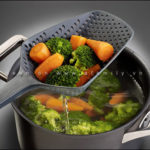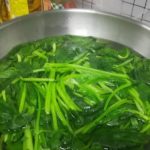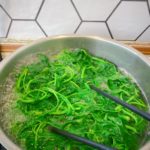Green vegetables such as water spinach, jute leaves, chayote, pumpkin leaves… when stir-fried and turn red or dark will make the dish less appealing and less delicious. Looking at a plate of green, glossy, soft stir-fried vegetables on a tray, everyone will want to eat. To keep this green color, remember the following tips:
Drain vegetables before stir-frying
Remember to remove wilted vegetables, wash them and let them drain. Avoid bruising the leaves when washing.
If the vegetables contain a lot of water, stir-frying them for a long time will make them turn dark and not green. After washing, put the vegetables in a colander and shake to drain the water. Especially for vegetables that need to be crispy, drain them thoroughly before stir-frying, otherwise the vegetable water will make them soft and soggy.
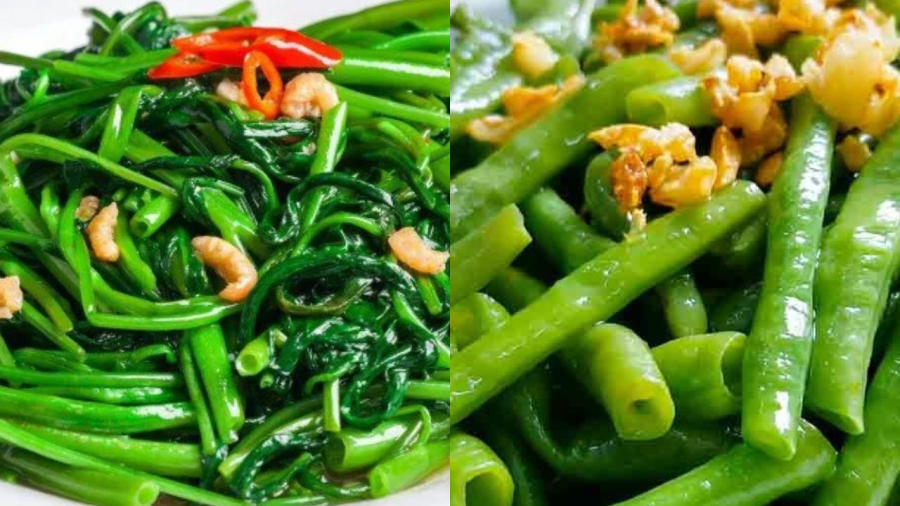
Glossy green stir-fried vegetables
Prepare ingredients in advance
Stir-frying vegetables requires quick stirring and fast cooking so that the vegetables are cooked evenly and do not turn dark or have some pieces cooked and some raw. Therefore, you need to prepare seasonings, sauces next to the stove so that you can stir-fry quickly. Therefore, necessary seasonings such as sauces, garlic, onions, must be ready to add when stir-frying…
Stir-fry over high heat
When stir-frying, remember to heat the pan and turn the stove to the highest heat setting. To determine if the pan is hot enough, drop 1-2 drops of water into it and if the water evaporates within 1-2 seconds of contact, the pan will be hot and ready to stir-fry. Do not overheat the pan as it will cause a burnt smell to stick to the food.
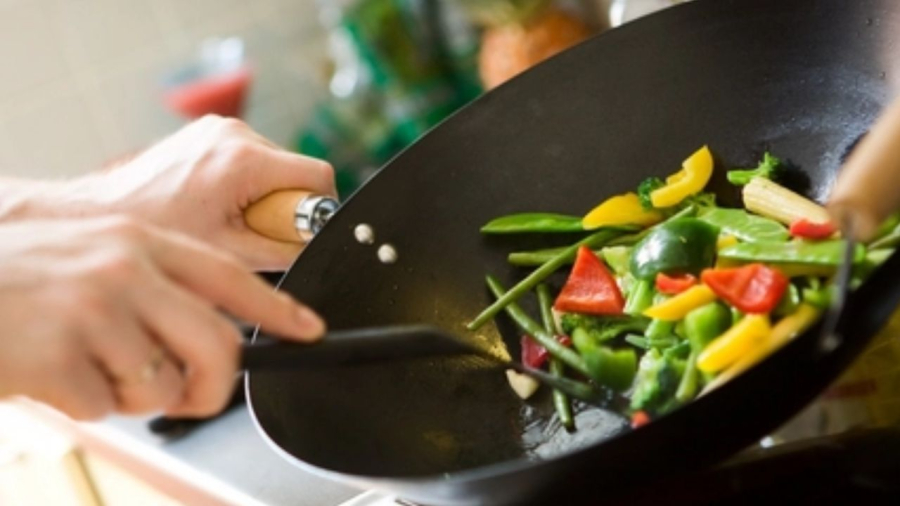
Stir-frying requires quick hands, so prepare all the necessary ingredients and seasonings before stir-frying
Stir-frying steps:
– When the pan is hot, pull the pan to the edge of the stove to avoid the highest heat, then add oil.
– Then lift the pan so that the oil coats the entire surface of the pan. If you see smoke billowing when you add the oil, the pan is too hot, so reduce the heat to cool it down a bit.
– Add the minced garlic and onions to the pan of oil and stir until fragrant. Use chopsticks or a spatula to push the garlic to the side of the pan and then add the vegetables.
– Add salt, soy sauce and stir quickly for about 2 minutes. Add sauce or clear water around the edge of the pan (Remember to pour around the edge of the pan and not in the middle of the pan, as this will quickly cool the pan and the vegetables will not be green).
– Then stir to let the vegetables absorb the stir-fry sauce. You can cover the pan but do not cover it for long, just open the lid after about 20 seconds and stir-fry until the vegetables are cooked through. Avoid unevenly stir-fried vegetables, as the vegetables that don’t get enough heat will turn black.
Determine the appropriate quantity for the size of the pan
Therefore, each time you only stir-fry an amount that is sufficient for the pan so that it heats up the best. Be sure to use a stove that is compatible with the pan. For example, an industrial gas stove can handle a large pan, but a home stove should only be used with a medium-sized pan. Having a small flame will cause the vegetables to cook slowly, making them not crispy and dark, especially water spinach. When stir-frying, remember to stir evenly and quickly so that the vegetables cook evenly and do not turn dark.
Blanch the vegetables before stir-frying


























